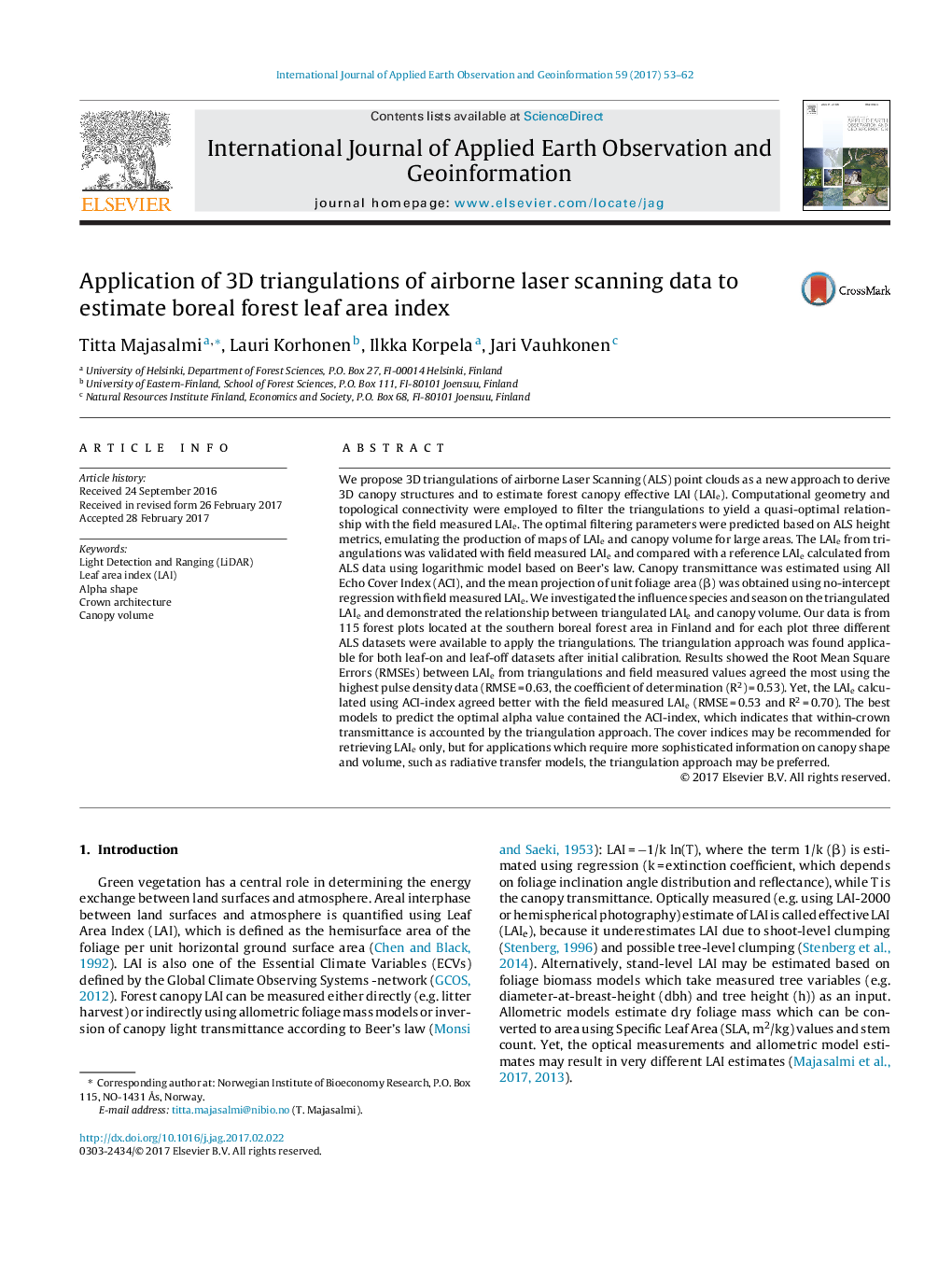| کد مقاله | کد نشریه | سال انتشار | مقاله انگلیسی | نسخه تمام متن |
|---|---|---|---|---|
| 5755601 | 1621798 | 2017 | 10 صفحه PDF | دانلود رایگان |
عنوان انگلیسی مقاله ISI
Application of 3D triangulations of airborne laser scanning data to estimate boreal forest leaf area index
ترجمه فارسی عنوان
استفاده از سه بعدی سازی سه بعدی داده های اسکن لیزر هوایی برای تخمین شاخص سطح برگ جنگل بوری
دانلود مقاله + سفارش ترجمه
دانلود مقاله ISI انگلیسی
رایگان برای ایرانیان
کلمات کلیدی
موضوعات مرتبط
مهندسی و علوم پایه
علوم زمین و سیارات
کامپیوتر در علوم زمین
چکیده انگلیسی
We propose 3D triangulations of airborne Laser Scanning (ALS) point clouds as a new approach to derive 3D canopy structures and to estimate forest canopy effective LAI (LAIe). Computational geometry and topological connectivity were employed to filter the triangulations to yield a quasi-optimal relationship with the field measured LAIe. The optimal filtering parameters were predicted based on ALS height metrics, emulating the production of maps of LAIe and canopy volume for large areas. The LAIe from triangulations was validated with field measured LAIe and compared with a reference LAIe calculated from ALS data using logarithmic model based on Beer's law. Canopy transmittance was estimated using All Echo Cover Index (ACI), and the mean projection of unit foliage area (β) was obtained using no-intercept regression with field measured LAIe. We investigated the influence species and season on the triangulated LAIe and demonstrated the relationship between triangulated LAIe and canopy volume. Our data is from 115 forest plots located at the southern boreal forest area in Finland and for each plot three different ALS datasets were available to apply the triangulations. The triangulation approach was found applicable for both leaf-on and leaf-off datasets after initial calibration. Results showed the Root Mean Square Errors (RMSEs) between LAIe from triangulations and field measured values agreed the most using the highest pulse density data (RMSE = 0.63, the coefficient of determination (R2) = 0.53). Yet, the LAIe calculated using ACI-index agreed better with the field measured LAIe (RMSE = 0.53 and R2 = 0.70). The best models to predict the optimal alpha value contained the ACI-index, which indicates that within-crown transmittance is accounted by the triangulation approach. The cover indices may be recommended for retrieving LAIe only, but for applications which require more sophisticated information on canopy shape and volume, such as radiative transfer models, the triangulation approach may be preferred.
ناشر
Database: Elsevier - ScienceDirect (ساینس دایرکت)
Journal: International Journal of Applied Earth Observation and Geoinformation - Volume 59, July 2017, Pages 53-62
Journal: International Journal of Applied Earth Observation and Geoinformation - Volume 59, July 2017, Pages 53-62
نویسندگان
Titta Majasalmi, Lauri Korhonen, Ilkka Korpela, Jari Vauhkonen,
